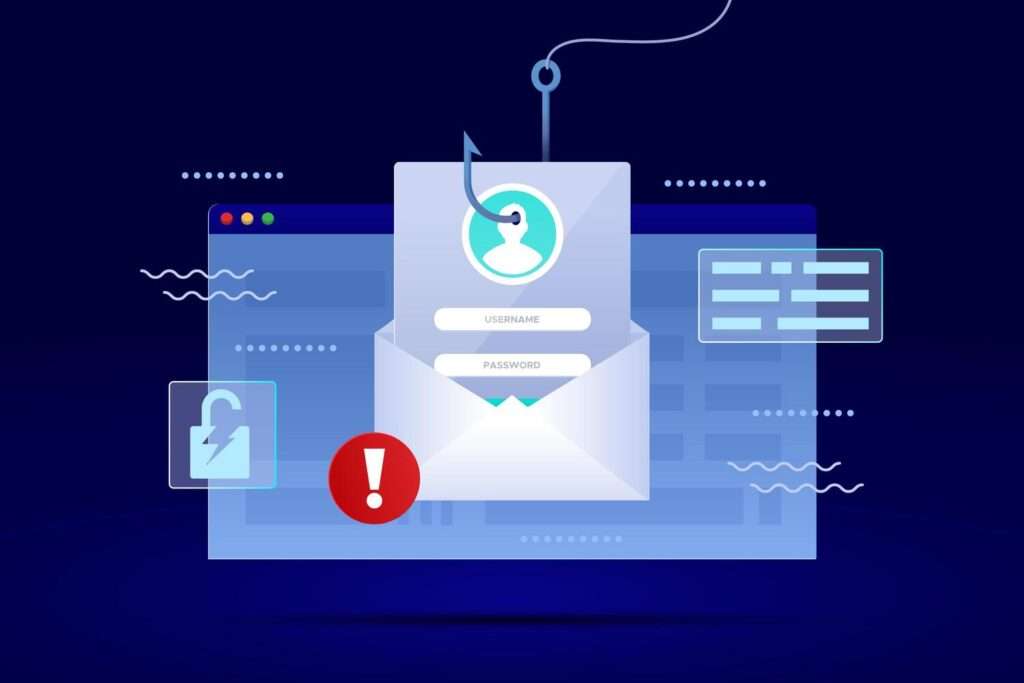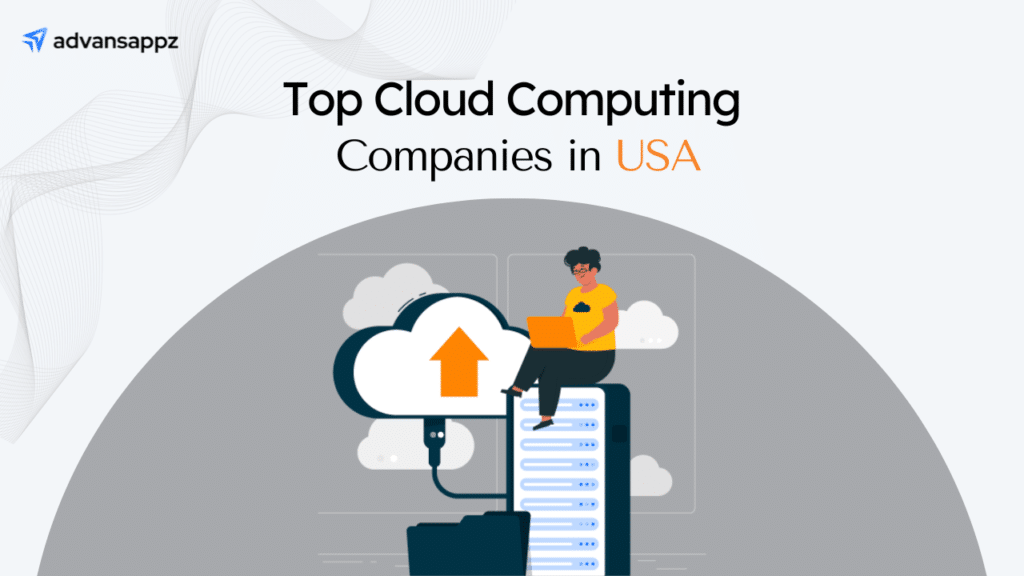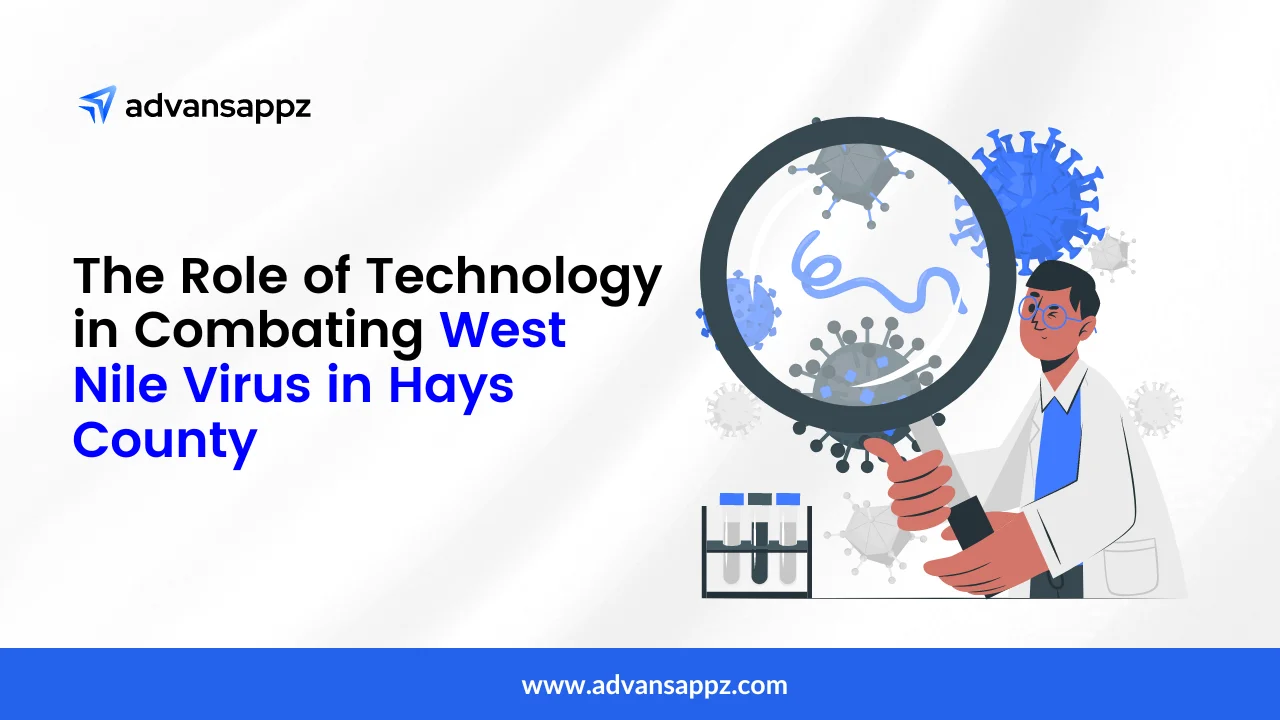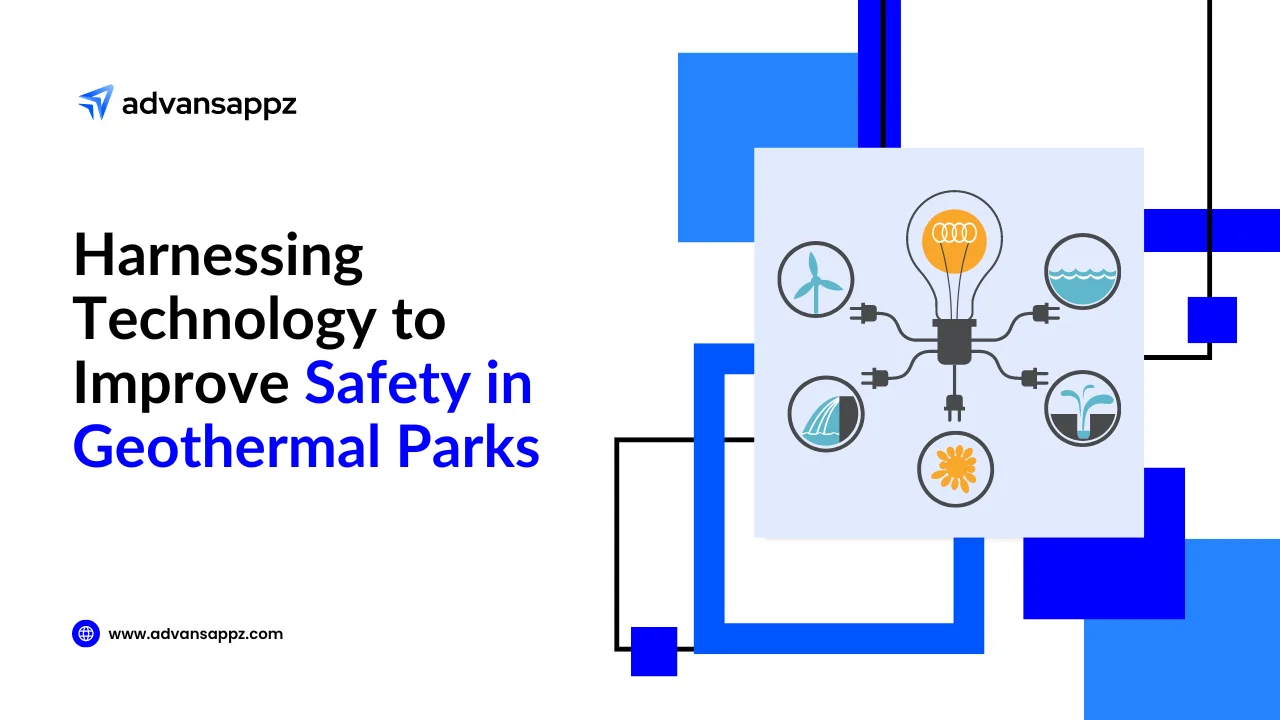
Running a business takes a lot of patience and strategic planning. As cyberattacks are increasing every day, it is vital to take measures to keep business data safe & secure. While most companies are already working on their cybersecurity strategy for ensuring safety, nearly half of the small businesses spend less than $1,500 monthly on cybersecurity.
According to industry experts, it is high time for businesses to create effective cybersecurity strategies for a secure operational flow. In this article, you will learn a few tips to create a successful cybersecurity plan for your business.
But before that, let’s understand how cybersecurity solutions help businesses.
- Protects sensitive data: Cybersecurity measures such as firewalls, encryption, and access controls help safeguard sensitive business and customer data. This protection is especially critical for start-ups needing more resources to recover from a data breacha.
- Builds customer trust: When businesses protect their customers’ personal and financial information, it helps build trust and confidence in the brand. This can lead to better customer loyalty and repeat business.
- Reduces financial losses: Cybersecurity breaches can result in significant financial losses for businesses, including the cost of investigating the breach, repairing systems, and compensating affected parties. By investing in cybersecurity measures, companies can minimize the risk of financial losses due to data breaches.
- Enhances reputation: A cyberattack can affect a business’s reputation and trust from customers and stakeholders. By demonstrating a commitment to cybersecurity, companies can enhance their reputation and position themselves as trustworthy and reliable.
Overall, it is essential to have a cybersecurity solution in 2023 if a business is looking for a hassle-free growth and transactional flow.
How do Cyberattacks Affect any Business?

Cyberattack incidents can have a huge negative impact on businesses. Here are a few types of cyber incidents:
-
- Malicious cyberattacks (e.g., via ransomware)
-
- Virus compromising your network
-
- Accidental data breach (e.g., sensitive data sent to the wrong address)
-
- Phishing attack
Let us understand how cyberattacks affect businesses-
01) Financial Loss
According to the 2022 Cost of a Data Breach Report by IBM, the average cost of a data breach globally in 2022 was $4.35 million. This represents a 2.6% increase from the 2021 amount of $4.24 million. The report also found that the average cost per compromised record was $164, up from $150 in 2021.
02) Loss of Client’s Trust
As soon as the news of a threat attacking the company successfully spreads, clients associated with the firm often step back due to a breach of trust. Based on studies, around 70% of clients switch to reliable providers in the occurrence of even a small data breach, no matter whose fault is. Isn’t this fact enough to prevent a data breach in the future?
Steps to Create an Effective Cybersecurity Strategy
Step1. Consider the Various Cyber Risks Affecting your Business
First thing first, when it comes to building a strategy, you need to conduct an internal assessment to comprehend what kinds of threats your business is dealing with already or may deal with in the future.
This involves identifying and evaluating potential threats and vulnerabilities to your network, systems, and data. Conducting a security assessment can help to identify weaknesses in your current security measures and provide insight into potential risks.
You can develop a targeted and effective cybersecurity strategy that addresses these concerns and provides the necessary safeguards to protect against cyber threats. Regular risk assessments should be conducted to ensure that your cybersecurity strategy remains current and effective in addressing new and evolving threats.
A new age of interconnectivity with the Internet of Things will be possible with the arrival and expansion of 5G networks (IoT). Unfortunately, multiple devices communicating with one another expose them to threats from the outside world, assaults, or unidentified software bugs. Even Chrome, the most popular browser in the world backed by Google, was discovered to contain significant bugs.
Because 5G architecture is still relatively new, extensive study is needed to identify vulnerabilities and strengthen the system’s defenses against outside attacks. The 5G network may experience numerous network assaults at every stage that we are unaware of. To prevent data breaches, makers must be very careful when creating sophisticated 5G hardware and software.
Step 2. Figure out the Level of Cybersecurity Maturity of Your Company:
Assessing your organization’s level of cybersecurity maturity is a critical step in understanding your cybersecurity risks and developing an effective strategy to address them. One approach is to use the National Institute of Standards and Technology (NIST) Cybersecurity Framework, which provides comprehensive guidelines and best practices for organizations to improve their cybersecurity posture.
The NIST framework includes five core functions: Identity, Protect, Detect, Respond, and Recover. Each function is broken down into subcategories, which provide a more detailed view of specific cybersecurity activities.
To determine your organization’s level of cybersecurity maturity, you can use a tool such as the Acronis Security Assessment Questionnaire. This questionnaire is based on the NIST framework and includes 50 questions related to the five core functions of the framework. By answering these questions, you can identify your organization’s strengths and weaknesses and determine where to focus your cybersecurity efforts.
Another important factor to consider when assessing your organization’s cybersecurity maturity is the data types you store and the systems you use. For example, if you store sensitive customer data, such as financial or personal information, you may need to implement additional safeguards to protect against data breaches and cyberattacks.
It is another significant cybersecurity development that we cannot disregard. Industries, particularly those in developed countries, depend heavily on particular software for daily operations. For example, they want a Cry assault on National Health Service hospitals in Scotland and England, corrupting over 70,000 medical devices. These ransomware targets are more targeted.
Although ransomware typically threatens to publish the victim’s data if a ransom is not paid, it can also impact big businesses or entire countries.
After the assessment, the most vital thing you can do is identify the loopholes in protection. You can double-check the tools and software you use to protect your business from possible threats. You must ensure that software can prevent and detect cyberattacks and provide to mitigate future risks.
Step 4: Finalize Your Cybersecurity Strategy
Once you have assessed your organization’s cybersecurity risks and identified potential vulnerabilities, the next step is to finalize your cybersecurity strategy. This involves documenting your cybersecurity policies, plans, and procedures, including risk assessments and incident response plans.
Your cybersecurity strategy should also include training for all employees in your organization. It is crucial that everyone understands their role in protecting the organization’s assets and is aware of potential risks and threats.
In addition, your organization must have a response plan in case of a cybersecurity incident. This plan should include specific steps to take during and after an attack, such as isolating infected systems, notifying stakeholders, and initiating a disaster recovery plan. It is also essential to have a crisis management plan that includes communication strategies for internal and external stakeholders, including employees, customers, and partners.
By having a well-documented strategy and response plan, you can minimize the impact of a cyber incident and quickly recover from any damage.
Elements of a Strong Cybersecurity Plan
A robust cybersecurity plan is essential to protect businesses from cyberattacks. Here are some Cybersecurity statistics that highlight the importance of the elements of a strong cybersecurity plan:
Encryption:
- According to a study by Ponemon Institute, the average data breach cost is $3.86 million, and companies that use encryption can save up to $360,000 in breach costs.
- The same study found that 54% of companies do not have an encryption strategy, putting them at risk for data breaches and regulatory noncompliance.
Access control:
- The 2021 Verizon Data Breach Investigations Report found that 61% of data breaches involve compromised credentials.
- Strong access control measures, such as multi-factor authentication, can significantly reduce the risk of unauthorized access and credential theft.
Monitoring:
- A study by IBM found that it takes an average of 280 days to detect and contain a data breach.
- Implementing continuous monitoring and real-time threat detection can help organizations identify and respond to potential threats more quickly.
Incident response:
- The Ponemon Institute found that having an incident response plan can save organizations an average of $2 million in breach costs.
- Despite this, only 25% of organizations have a formal incident response plan in place, according to a study by the SANS Institute.
Business continuity and disaster recovery:
- According to a Disaster Recovery Preparedness Council report, the average cost of IT downtime is $5,600 per minute.
- Implementing a business continuity and disaster recovery plan can help organizations minimize the impact of downtime and quickly recover from disruptions.
Also check: Cybersecurity Trends to Watch in 2023
Get Started With the Right Cybersecurity Strategy for Your Business
This article will help you create the best strategy for your business data. It also makes sense to take professional consultation from experts. All you need is to find a reliable cybersecurity solution provider like advansappz; known for comprehensive cybersecurity solutions and consultation services to protect your business from unwanted threats.
Frequently Asked Questions
-
Risk Assessment: Begin by conducting a thorough assessment of your organization’s digital assets, potential vulnerabilities, and the associated risks. Identify the critical assets and potential threats that could impact your business. This assessment forms the foundation for developing targeted cybersecurity measures.
-
Security Policies and Procedures: Establish clear security policies and procedures that outline the acceptable use of technology, data handling practices, access controls, incident response protocols, and employee responsibilities. Ensure that all employees are educated about and adhere to these policies.
-
Secure Network Infrastructure: Implement robust network security measures, including firewalls, intrusion detection systems, and regular monitoring of network traffic. Employ secure configurations for network devices and regularly patch and update software to address known vulnerabilities.
-
Secure Endpoint Protection: Implement endpoint protection measures, such as antivirus and anti-malware software, to secure individual devices and prevent unauthorized access or malicious activities. Apply security patches and updates promptly to address known vulnerabilities.
-
Access Controls and Authentication: Implement strong access controls and authentication mechanisms to ensure that only authorized individuals can access sensitive information or critical systems. Use multi-factor authentication (MFA) for an additional layer of security, especially for privileged accounts.
-
Data Protection and Encryption: Protect sensitive data by implementing encryption measures. Encrypt data at rest and in transit to prevent unauthorized access. Regularly backup critical data and ensure that backup copies are stored securely.
-
Employee Training and Awareness: Train employees on cybersecurity best practices, such as recognizing phishing attempts, using strong passwords, and safeguarding sensitive information. Foster a culture of security awareness and provide ongoing training to stay updated on emerging threats.
-
Incident Response and Recovery Plan: Develop an incident response plan that outlines the steps to be taken in the event of a cybersecurity incident. Establish a designated response team, define roles and responsibilities, and conduct regular drills to ensure preparedness. Additionally, have a backup and recovery plan to minimize downtime and data loss in the event of an incident.
-
Continuous Monitoring and Threat Intelligence: Implement continuous monitoring of network activity and utilize threat intelligence sources to stay informed about emerging threats and vulnerabilities. Regularly update security measures and conduct penetration testing and vulnerability assessments to identify and address potential weaknesses.
-
Partnerships and External Support: Consider engaging external cybersecurity experts or managed security service providers (MSSPs) to enhance your organization’s cybersecurity capabilities. Collaborate with industry peers, government agencies, and security communities to stay informed and share threat intelligence.
There are various cybersecurity strategies and frameworks available to organizations. While it’s challenging to limit them to just three, here are three commonly recognized cybersecurity strategies:
-
Defense-in-Depth: The Defense-in-Depth strategy emphasizes multiple layers of security controls to provide a comprehensive defense against cyber threats. It involves implementing a combination of preventive, detective, and corrective measures across different layers of an organization’s IT infrastructure. This strategy aims to create overlapping layers of defense, reducing the likelihood of a successful cyberattack and minimizing the impact if one occurs. It typically includes measures such as firewalls, intrusion detection systems, access controls, encryption, employee awareness training, and incident response planning.
-
Zero Trust: The Zero Trust strategy is based on the principle of assuming that no user or device should be automatically trusted, even if they are within the organization’s network. It requires strict verification and authentication of users and devices before granting access to resources. Zero Trust relies on continuous monitoring, strict access controls, and micro-segmentation to limit access privileges to the bare minimum necessary for each user or device. This approach helps prevent lateral movement within the network by potential attackers and provides better visibility and control over network activities.
-
Cyber Resilience: Cyber resilience is a strategy that focuses on an organization’s ability to prepare for, respond to, and recover from cyber incidents. It involves building robust incident response plans, conducting regular testing and drills, and implementing backup and recovery mechanisms. Cyber resilience also emphasizes proactive measures such as vulnerability management, threat intelligence, and continuous monitoring to detect and respond to threats effectively. This strategy aims to minimize the impact of cyber incidents and ensure business continuity in the face of evolving cyber threats.
It’s important to note that these three strategies are not mutually exclusive, and organizations often employ a combination of them based on their specific needs and risk profiles. Additionally, cybersecurity strategies should be tailored to the organization’s unique circumstances and continuously adapted to address emerging threats and technological advancements.
-
Assess Your Risks: Conduct a comprehensive risk assessment to identify potential vulnerabilities and risks specific to your business. Evaluate the value of your digital assets, potential threats, and the potential impact of a cybersecurity incident. This assessment will help prioritize and tailor your cybersecurity efforts.
-
Develop a Cybersecurity Plan: Create a detailed cybersecurity plan that outlines the objectives, strategies, and tactics to address the identified risks. Include specific action items, timelines, and responsible parties. The plan should align with industry best practices, regulatory requirements, and your organization’s specific needs.
-
Establish Policies and Procedures: Develop and communicate clear cybersecurity policies and procedures to all employees. These policies should cover acceptable use of technology, data handling practices, password policies, incident reporting, and other relevant guidelines. Ensure that employees understand their roles and responsibilities in maintaining cybersecurity.
-
Create an Incident Response Plan: Develop a comprehensive incident response plan that outlines the steps to be taken in the event of a cybersecurity incident. Define roles and responsibilities, establish communication channels, and conduct drills and exercises to test the effectiveness of the plan. Regularly update the plan based on lessons learned from incidents and emerging threats.
-
Secure Network Infrastructure: Implement robust network security measures, including firewalls, intrusion detection systems, and regular monitoring of network traffic. Employ secure configurations for network devices, segment networks to limit access, and regularly update software and firmware to address known vulnerabilities.
-
Secure Endpoint Devices: Implement endpoint protection measures such as antivirus and anti-malware software, host-based firewalls, and regular patching and updates for operating systems and applications. Apply strong access controls, use multi-factor authentication, and encrypt sensitive data on endpoint devices.
-
Train Employees: Provide regular cybersecurity training and awareness programs for all employees. Educate them about common threats such as phishing, social engineering, and malware. Train employees on best practices for password security, safe internet browsing, and handling sensitive data. Encourage reporting of suspicious activities or incidents promptly.
-
Implement Data Protection Measures: Protect sensitive data by implementing encryption for data at rest and in transit. Use secure backup and recovery mechanisms to ensure data integrity and availability. Regularly test and validate backups to ensure they can be successfully restored.
-
Conduct Regular Security Assessments: Perform periodic security assessments, penetration testing, and vulnerability scanning to identify and address potential weaknesses in your systems. Regularly monitor and analyze logs and system activities for signs of potential security breaches.
-
Stay Informed and Updated: Stay abreast of the latest cybersecurity threats, trends, and best practices. Follow reputable sources, subscribe to security alerts, and participate in industry forums and information-sharing communities. Keep software, firmware, and security patches up to date to protect against known vulnerabilities.
-
Engage External Support: Consider engaging external cybersecurity experts or managed security service providers (MSSPs) to assess your security posture, conduct audits, and provide ongoing monitoring and support. They can offer specialized expertise and help fill any resource or skill gaps within your organization.
-
Understand Your Business: Begin by gaining a deep understanding of your organization’s business objectives, operations, and the value of your digital assets. Identify the critical systems, data, and processes that need protection. Consider the specific cybersecurity risks and regulatory requirements relevant to your industry.
-
Assess Risks: Conduct a comprehensive risk assessment to identify potential vulnerabilities, threats, and the potential impact of a cybersecurity incident. Evaluate the likelihood of occurrence and potential consequences of various risks. This assessment will help prioritize your cybersecurity efforts.
-
Define Objectives: Based on the risk assessment, establish clear and specific cybersecurity objectives that align with your business goals. Examples may include protecting customer data, ensuring business continuity, complying with regulations, or reducing the risk of financial loss. Objectives should be measurable and time-bound.
-
Develop a Framework: Create a framework that outlines the strategies, tactics, and actions to achieve your cybersecurity objectives. Consider industry best practices and regulatory requirements. Include areas such as network security, access controls, data protection, employee awareness, incident response, and third-party risk management.
-
Establish Policies and Procedures: Develop and document cybersecurity policies and procedures that align with your objectives and framework. These policies should cover acceptable use of technology, data handling practices, password management, incident response, employee onboarding and training, and third-party security requirements. Ensure policies are communicated, understood, and followed by all employees.
-
Allocate Resources: Determine the necessary resources, including budget, personnel, and technology, to implement and maintain your cybersecurity strategy. Consider investments in security tools, employee training, external expertise, and ongoing monitoring and assessment activities. Secure executive support and commitment for resource allocation.
-
Implement Controls: Implement a range of security controls and measures to address the identified risks and achieve your objectives. Examples include firewalls, intrusion detection systems, encryption, access controls, employee awareness training, regular patching and updates, and incident response planning. Ensure controls are applied consistently across your organization.
-
Monitor and Assess: Establish a process for continuous monitoring, assessment, and improvement of your cybersecurity posture. Regularly review security logs, conduct vulnerability assessments and penetration testing, and track key security metrics. Stay informed about emerging threats and update your strategy accordingly.
-
Educate Employees: Cybersecurity is a shared responsibility. Train and educate employees on cybersecurity best practices, the importance of data protection, and how to identify and respond to potential threats. Foster a culture of cybersecurity awareness, reporting, and ongoing learning.
-
Test and Exercise: Conduct regular drills, simulations, and exercises to test the effectiveness of your cybersecurity strategy, incident response plans, and employee readiness. Identify areas for improvement and address any gaps or weaknesses.
-
Stay Updated: Keep abreast of the evolving threat landscape, industry trends, and emerging technologies. Stay informed through industry publications, cybersecurity forums, and participation in information-sharing communities. Regularly review and update your strategy to address new risks and incorporate advancements in security practices.
The “5 C’s” of cybersecurity is a framework that highlights key elements for a comprehensive cybersecurity approach. While different variations of the 5 C’s exist, here is one commonly referenced interpretation:
-
Cybersecurity Culture: The first “C” emphasizes the importance of creating a cybersecurity culture within an organization. This involves fostering a security-conscious mindset and promoting awareness, education, and training among employees at all levels. Building a culture where cybersecurity is ingrained in everyday operations helps establish a strong foundation for effective security practices.
-
Cyber Hygiene: The second “C” refers to cyber hygiene, which involves implementing fundamental security practices and maintaining good cyber habits. This includes measures such as regularly updating and patching software, using strong and unique passwords, enabling two-factor authentication, and being cautious about phishing emails and suspicious links. Practicing good cyber hygiene helps prevent common security breaches.
-
Continuous Monitoring: The third “C” emphasizes the need for continuous monitoring of networks, systems, and applications. Regularly monitoring activities, analyzing logs, and using security tools and technologies enable the detection of anomalies, unusual behavior, and potential security incidents. Continuous monitoring allows for timely response and mitigation of threats.
-
Compliance: The fourth “C” highlights the importance of complying with relevant laws, regulations, and industry standards. Compliance ensures that organizations meet legal requirements and follow best practices for data protection, privacy, and security. Adhering to compliance frameworks helps organizations safeguard sensitive information and maintain trust with customers, partners, and regulatory authorities.
-
Collaboration: The fifth “C” focuses on collaboration among stakeholders in the cybersecurity ecosystem. This includes sharing threat intelligence, best practices, and lessons learned with industry peers, government agencies, security communities, and information-sharing platforms. Collaboration enables collective defense against cyber threats, enhances situational awareness, and promotes the development of effective cybersecurity strategies and solutions.












